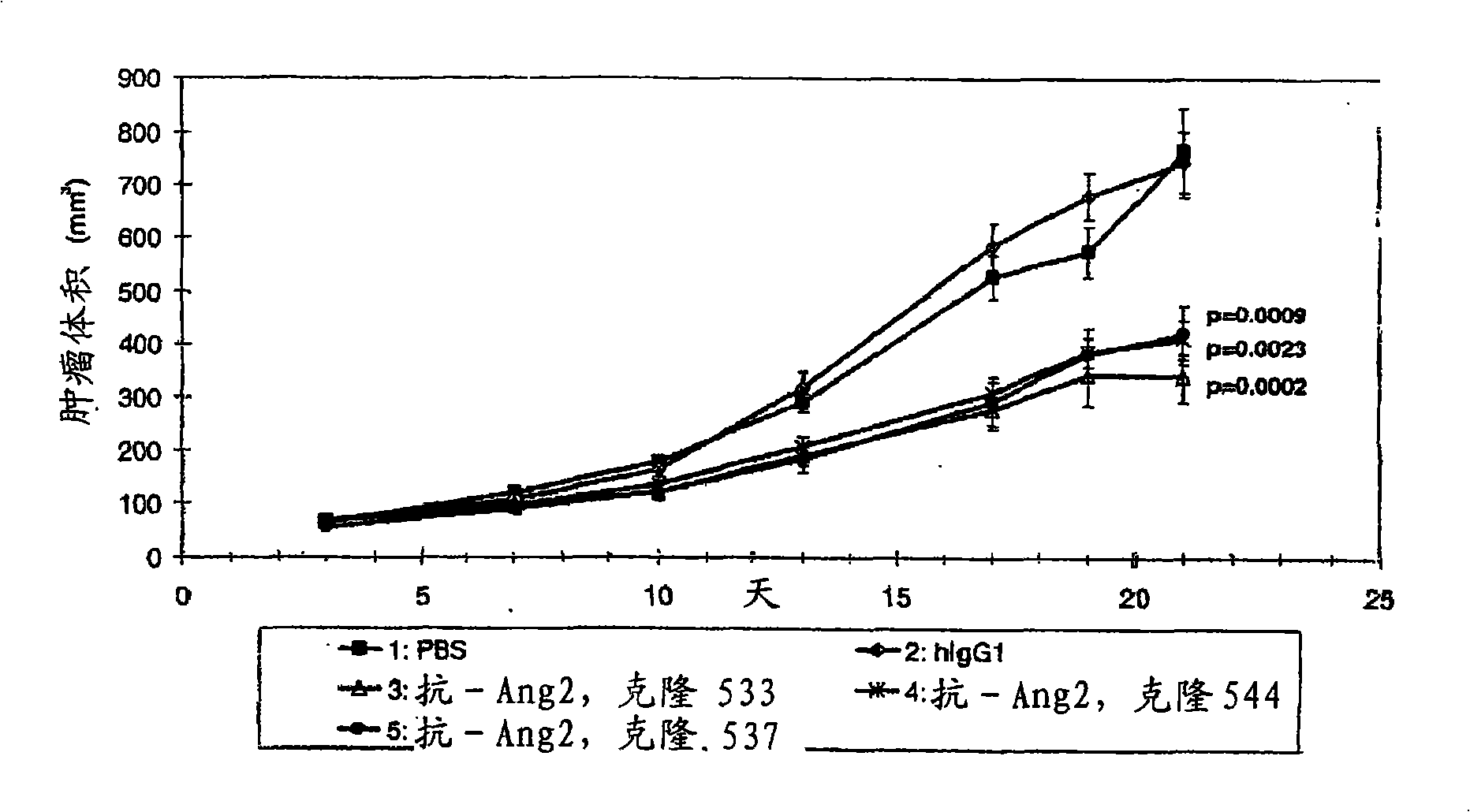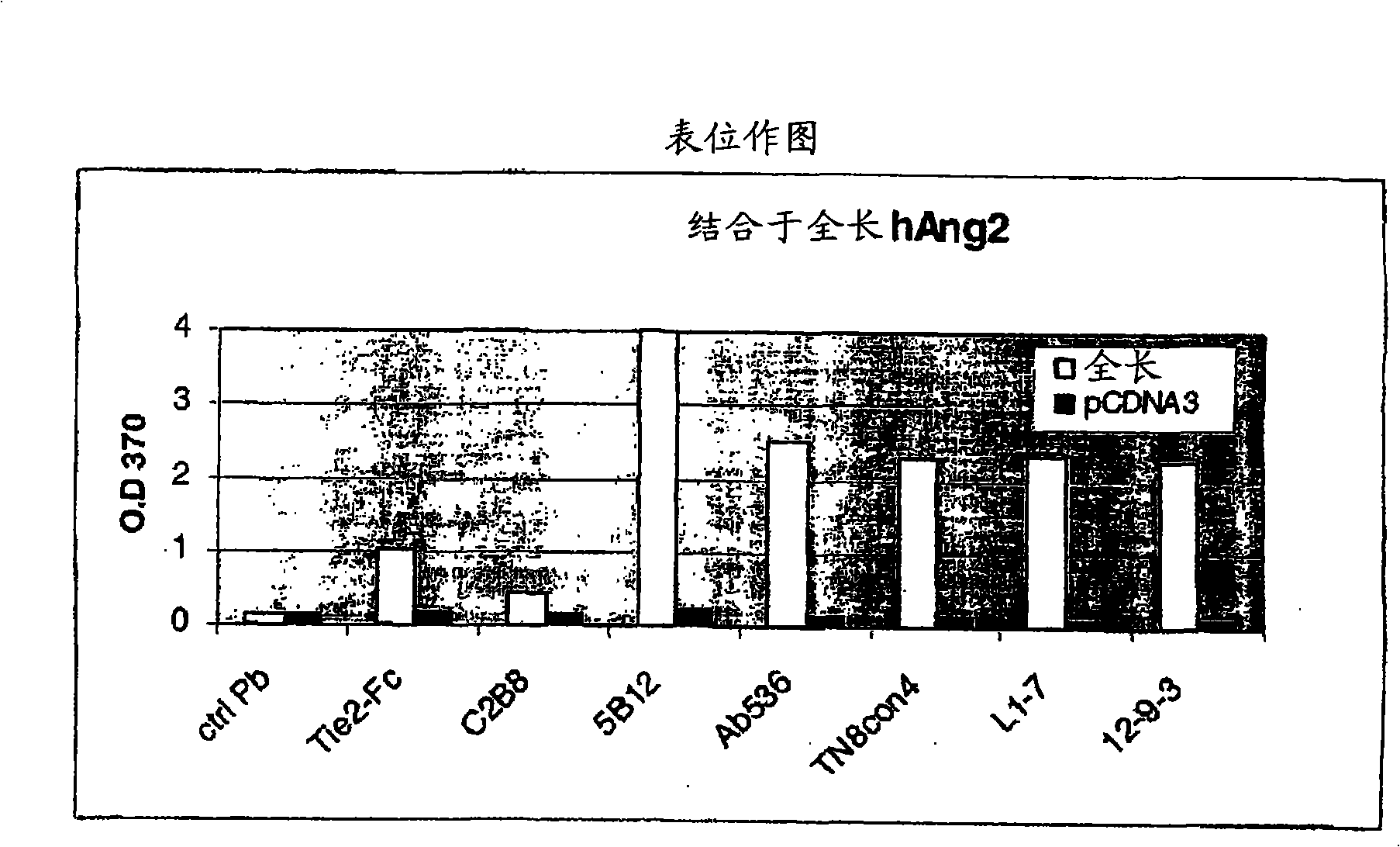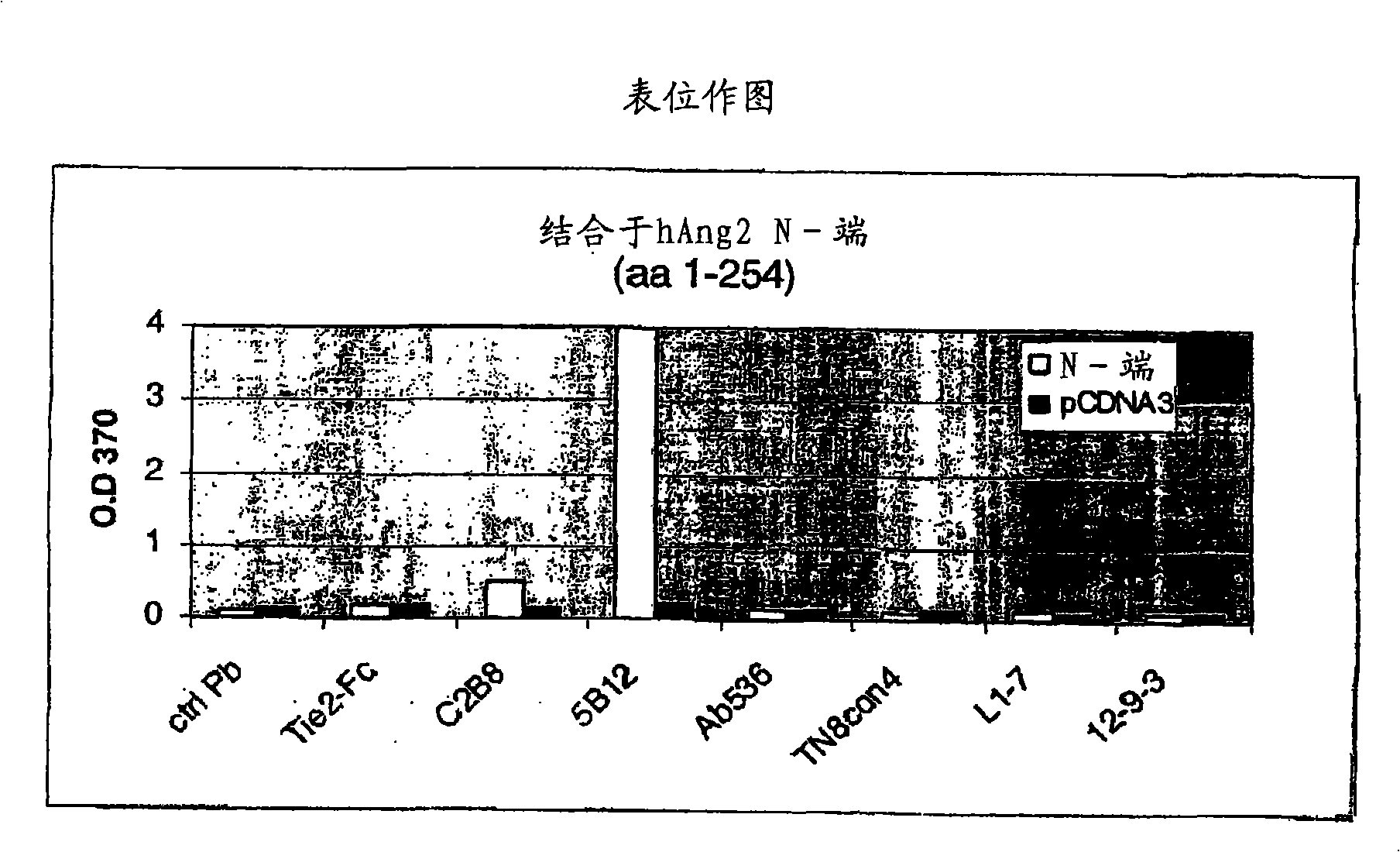Angiopoietin-2 specific binding agents
An angiopoietin-promoting, species-specific technology, applied in cardiovascular system diseases, carrier-bound antigen/hapten components, drug combinations, etc., can solve the problems of not being able to clearly understand the targets of anti-cancer therapy
- Summary
- Abstract
- Description
- Claims
- Application Information
AI Technical Summary
Problems solved by technology
Method used
Image
Examples
Embodiment 1
[0313] Express Ang-2 in pathological and normal tissues
[0314] In situ hybridization was used to detect the expression of Ang-2 in normal and pathological tissues. The human Ang-2 sequence fragment (Genbank accession number: AF004327, nucleotides 1274-1726) and mouse Ang-2 fragment (Genbank accession number: AF004326, nucleosides) were amplified from human or mouse fetal lung cDNA by reverse transcription PCR. Acid 1135-1588), and cloned into pGEM-T plasmid vector, confirmed by sequencing. use 33 P-UTP and RNA polymerase are transcribed using linearized plasmid as template 33 P-labeled antisense RNA probe. Tissues blocked by formaldehyde and embedded in paraffin were sectioned (5 μm) and collected on charged glass slides. Before in situ hybridization, the tissue was permeabilized with 0.2M HCl, then digested with proteinase K, and acetylated with triethanolamine and acetic anhydride. The radiolabeled probe was hybridized with the section overnight at 55°C, then digested with R...
example example 2
[0318] Preparation of recombinant mAng-2 protein and rabbit polyclonal anti-Ang-2 antiserum
[0319] Using PCR primers used to amplify the full-length human Ang-2, a 15-day-old mouse embryo cDNA library (Marathon-Ready-cDNA, Cat. #7459-1, Clonetech, Inc.) was passed through PCR (Clontech Advantage PCR Kit, Cat. #K1905-01) to obtain the full-length mouse Ang-2 cDNA with His tag. The PCR product was ligated to the CMV promoter expression vector, and the resulting plasmid was transfected into HT1080 human fibrosarcoma cells (obtained from ATCC) with FuGENE6 transfection reagent (Roche, Cat. #1814443). Stable clones were isolated by G418 selection. The clones expressing mAng-2-his were screened using anti-His tag ELASA and Western blot.
[0320] The recombinant mAng-2 polypeptide was purified from the conditioned medium (C.M.) of these cells. A two-step chromatography was used to purify the conditioned medium containing mAng-2-His. Briefly, Tris buffer (pH 9.5) was added to the cond...
Embodiment 3
[0325] Evaluation of Ang-2 antibody molecular experiments
[0326] Molecular experiments (affinity ELISA, neutralization ELISA, and BIAcore) were developed to directly evaluate antibodies that bind to Ang-2 and related family members, and to evaluate the effects of antibodies on mAng-2:Tie2 interaction. These cell-based in vitro experiments are described below.
[0327] A. Affinity ELISA
[0328] For the initial screening of candidate anti-Ang-2 antibodies, purified human Ang-2 (Rand D Systems, Inc; catalog number 623-AN; where Ang-2 is provided as a mixture of two truncated fragments) or mouse Ang- 2 Polypeptide (prepared according to the method described above). In order to perform confirmatory binding experiments, human 293T cells were transfected with full-length human Ang-2 DNA and cultured in serum-free DMEM (containing about 50 μg / ml of bovine serum albumin (BSA)). Get people Ang-2.
[0329] Using a microtiter plate, add about 100 microliters of Ang-2 to each well and in...
PUM
 Login to View More
Login to View More Abstract
Description
Claims
Application Information
 Login to View More
Login to View More - R&D
- Intellectual Property
- Life Sciences
- Materials
- Tech Scout
- Unparalleled Data Quality
- Higher Quality Content
- 60% Fewer Hallucinations
Browse by: Latest US Patents, China's latest patents, Technical Efficacy Thesaurus, Application Domain, Technology Topic, Popular Technical Reports.
© 2025 PatSnap. All rights reserved.Legal|Privacy policy|Modern Slavery Act Transparency Statement|Sitemap|About US| Contact US: help@patsnap.com



